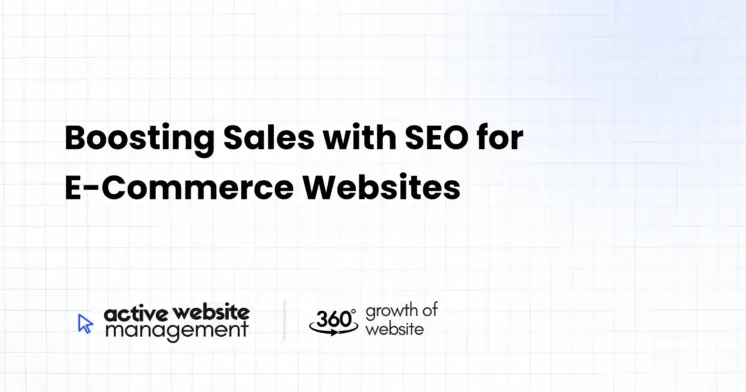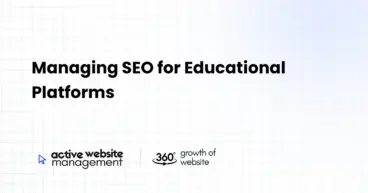January 6, 2025
4 min read
In today’s fast-paced digital world, businesses increasingly rely on e-commerce to reach their customers. With the competition growing fiercer by the day, optimizing your e-commerce website for search engines becomes more crucial than ever. Let’s explore how SEO can significantly impact your sales and take your online store to new heights.
Understanding E-Commerce SEO
What Is E-Commerce SEO?
E-commerce SEO involves optimizing your online store to increase visibility on search engines like Google. It includes numerous practices designed to improve the quality and quantity of website traffic, directing potential customers to your online products effortlessly.
Why Is SEO Important for E-Commerce?
- Enhanced Visibility: SEO ensures your website appears when potential customers search for products you offer, increasing the chances of driving organic traffic.
- Cost-Effective Advertising: Unlike paid marketing channels, SEO allows you to attract customers organically, reducing costs.
- Building Trust: High search engine rankings build credibility and trust among customers, indirectly boosting sales.
Don’t Just Maintain Your Website—
Grow It using Active Website Management! Don't Wait for Growth—Accelerate It with Active Website Management
Key Strategies for Optimizing E-Commerce SEO
1. Conducting Comprehensive Keyword Research
Keywords are the foundation of your SEO strategy. To position your products effectively:
- Use Tools: Leverage keyword research tools like Google Keyword Planner and SEMrush to find the most relevant keywords.
- Understand User Intent: Opt for buyer-intent keywords that demonstrate stronger purchase intent.
- Incorporate Long-Tail Keywords: Include longer, specific keyword phrases that offer less competition and target niche demographics.
2. Optimizing On-Page SEO
On-page SEO optimizes individual elements on your site to improve placement in search results.
Product Titles and Descriptions
- Use Primary Keywords: Ensure your primary keywords are in product titles and descriptions.
- Be Descriptive and Concise: Write clear, enticing product descriptions that capture interest and include vital details.
- Incorporate User Reviews: Integrate genuine reviews, boosting credibility.
Meta Tags and Headings
- Unique Meta Descriptions: Write compelling meta descriptions that summarize your content and entice clicks.
- Structured Headings: Use H1, H2, and H3 tags to organize content logically, enhancing user experience and search engine crawling.
3. Improving Technical SEO
Efficient technical SEO structure lays the foundation for better performance and ranking.
Site Speed and Mobile Optimization
- Fast Loading Times: Optimize images, leverage browser caching, and minimize code to improve speed.
- Mobile-Friendly Design: Ensure your website is responsive, providing seamless mobile experience, which is critical for rankings.
Clean URL Structures
- Descriptive URLs: Use short, keyword-rich URLs that give users and search engines insights into page content.
- Avoid Numbers and Special Characters: Maintain simplicity for easy readability and sharing.
4. Creating Engaging Content
Content is king, especially for e-commerce sites.
Don't Wait for Growth—Accelerate It with
Active Website Management Don't Wait for Growth—Accelerate It with Active Website Management
Blog Content
- Educational Articles: Write about industry trends, usage tips, and product comparisons to guide consumer decisions.
- Visual Content: Use videos and infographics to enhance engagement and make content interactive.
User-Generated Content
Encourage customers to leave reviews and testimonials, share their experiences through images or videos, and create a community around your products.
Enhancing User Experience for Better SEO
Navigation and Internal Linking
- Intuitive Navigation: Design a user-friendly navigation system that guides consumers to the right products quickly.
- Internal Links: Use internal links to connect related content, assisting in navigation and keeping users on-site longer.
Simplifying the Checkout Process
A streamlined checkout process enhances user satisfaction and reduces cart abandonment rates.
- Guest Checkouts: Allow purchases without creating an account to eliminate friction.
- Multiple Payment Options: Offer diverse payment methods to cater to global customers.
- Google Analytics: Track traffic sources, conversion rates, and user behavior for informed decision-making.
- Search Console: Use this tool to identify crawl errors, indexing issues, and gain insights into search performance.
Monitoring and Adjustment
Regularly review your SEO strategies, keeping an eye on algorithm changes and competitors. Adapt your approach accordingly to maintain and improve your rankings.
The Role of Active Website Management
For continuous growth and improvement in SEO, active website management plays a crucial role. Active Website Management offers services to ensure your site is always at peak performance, handling any needed adjustments, updates, and optimizations to improve visibility and user experience. Such consistent management helps prevent potential issues that could adversely impact SEO rankings and sales.
Conclusion
Implementing a well-rounded SEO strategy can transform your e-commerce site into a sales powerhouse. By staying current with evolving SEO practices, maintaining website health, and focusing on user experience, you’ll position your online store for sustained success. Start optimizing today and watch as your e-commerce website climbs the search ranks and boosts revenue effectively.







